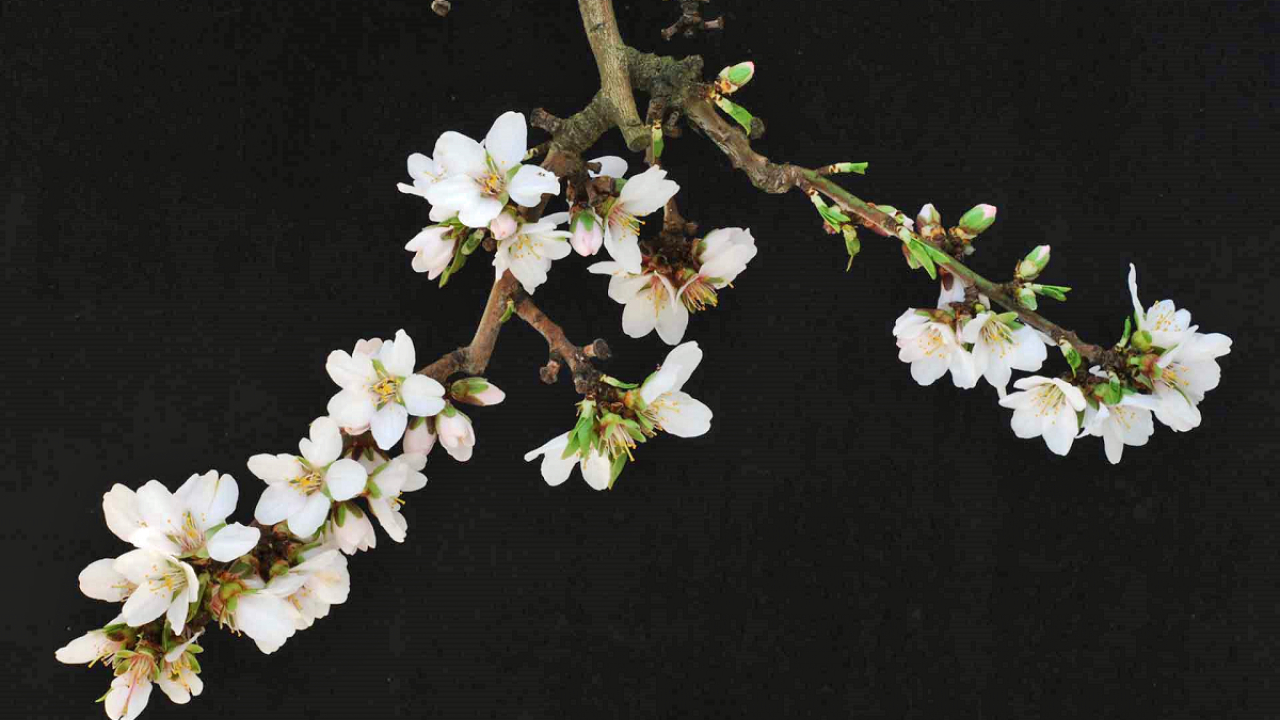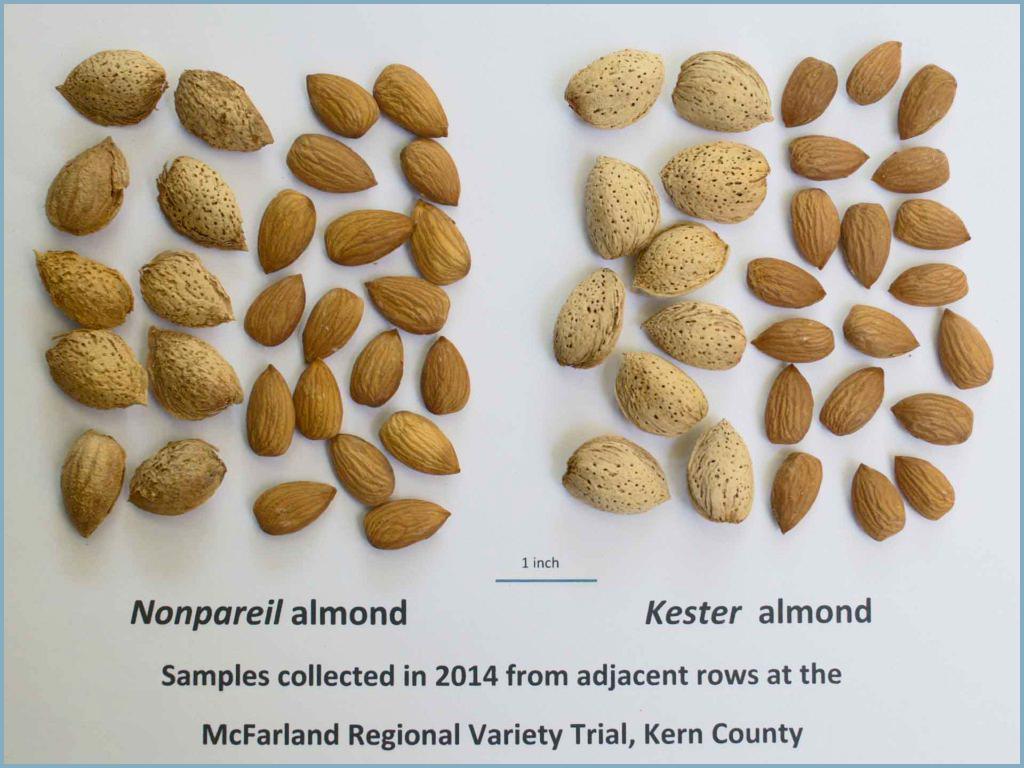
Kester, a Productive Late Bloom Almond Variety from University of California, Davis
By Tom Gradziel, Professor, Department of Plant Sciences, University of California, Davis
The almond variety Kester was developed as a pollenizer for Nonpareil that combines good kernel quality and productivity with a later flowering time for reducing vulnerability to flower diseases and frost damage. Kester’s high productivity and later flowering time also make it a promising alternative to the variety Padre in Padre/Butte plantings.
The Kester tree is vigorous and upright to spreading. This growth habit supports high productivity with an open tree architecture that allows greater light penetration and air circulation, thus reducing vulnerability to blossom, foliar and nut diseases.
Kester Evaluation
Kester was developed at the University of California Almond Breeding Program at Davis, California with long-term support from the Almond Board of California. The program was developed to breed new varieties and germplasm to meet the emerging needs of the expanding California industry. This includes long-term, regional testing to identify potentially serious problems in new variety releases before large-scale grower plantings.
Kester has been evaluated for over 20 years in large scale Regional Variety Trials and smaller grower trials in the northern and southern Sacramento Valley, as well as in the northern, central and southern San Joaquin Valley. During this 20-year regional evaluation, Kester showed no major vulnerability to important diseases and remained completely free of the genetic disorder Noninfectious Bud-Failure. Navel orangeworm damage was also consistently low.

Evaluating Yield Potential
To evaluate yield potential, Kester, Nonpareil and several pollenizers were evaluated in the central San Joaquin Valley, under standard commercial practices.
Data was collected from 2005 to 2012 for bloom and harvest time, nut yield and quality, and disease and insect damage, resulting in consistently high productivity over the eight years of evaluation. A high crop density, however, makes the variety vulnerable to alternate-bearing if sufficient nutrients and water are not provided for development of the current season crop as well as the flower bud development for next season’s bloom.
Mature trees under heavy production showed low to moderate susceptibility to scab, Alternaria leafspot and hull rot. The good shell-seal limited damage by navel orangeworm for all test years.
Foundation Trees
Virus-free and certified true-to-type foundation trees have been established at the Foundation Plant Services Clean Stock Facility at Davis, California to provide registered budwood to nurseries. The name Kester was chosen to acknowledge the extensive contributions to almond variety and rootstock improvement by Professor Dale Kester during his career in the Department of Pomology at the University of California, Davis.

About Tom Gradziel’s Research
Tom Gradziel is a professor in the Department of Plant Sciences, UC Davis. His research focuses on the genetic improvement of almond and peach. Strategies employed include wild germplasm characterization, preservation and introgression, intra-and inter-specific hybridization, marker assisted selection, and epigenetic manipulation. Breeding objectives include developing productive, high market quality varieties and rootstocks which combine the traditional as well as novel traits required to meet emerging grower, processor and market demands, including high productivity, improved disease/pest resistance and reduced labor inputs.
(This article is condensed from the original full article published in West Coast Nut. The original article includes information on planting methods, yields, and pest damage. Re-posted here, November 21, 2019)
